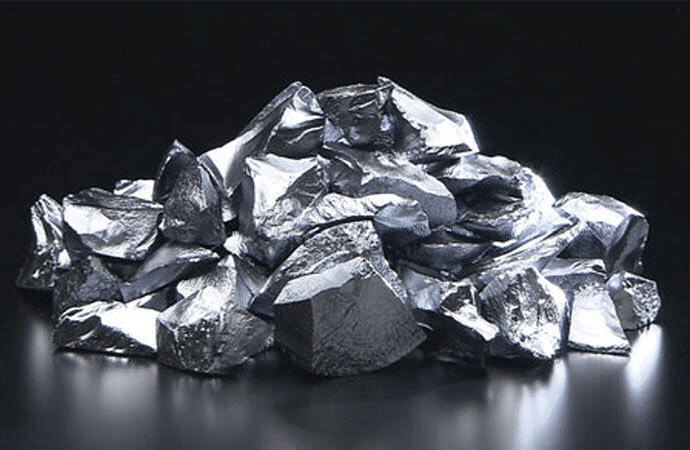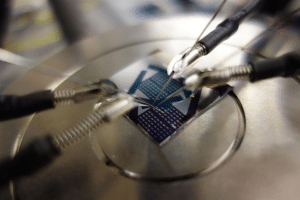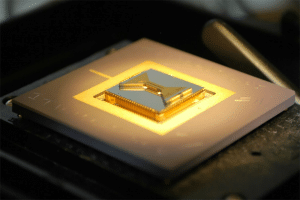
Polycrystalline silicon thin film丨Various factors affecting growth rate

Polycrystalline silicon film is a kind of crystalline silicon film that can be grown on the substrate of different materials, which consists of a large number of tiny grains with different crystal directions and sizes, whose diameters are generally in the range of a few hundred micrometers to a few tens of micrometers, and has the basic properties of bulk silicon. It is relatively simple to prepare, low cost and can be prepared on a large area. In the process of preparing polysilicon thin films, the internal structure, properties, and surface quality of the film are very sensitive to deposition parameters such as deposition temperature, reaction pressure, and silane flow rate. The setting of these parameters will have a direct impact on the growth rate of the film and the formation of the internal structure. In addition, the state of the process chamber and the parameter settings before and after the stabilization of the process, in addition to these parameters, also play an important role in the quality of the film during the film preparation process.
Reasons affecting the growth rate of polysilicon thin films
The growth rate of the film is determined by the gas phase transport rate and the reaction rate of the reactants on the surface. The selected deposition parameters are related to the growth rate of the film, and the growth rate of the film varies depending on the deposition conditions.
Effect of deposition temperature on the growth rate of polycrystalline silicon thin films
The growth rate of polysilicon film increases from 74 to 175 A/min with the increase of deposition temperature from 610 to 680 ℃. In this temperature range, the growth rate is basically linear and very sensitive to the change of temperature. According to the Grove kinetic model, the growth rate of polysilicon films prepared by LPCVD is determined by the reaction speed of silane molecules on the surface, and the change of the growth rate with the temperature matches well with that of the model in the low-temperature section. Therefore, the precision of temperature control in the process of depositing thin films is required to be high, and to prepare polycrystalline silicon films with good uniformity, the temperature must be kept constant at all places on the wafer surface.
Effect of silane flux on polycrystalline silicon film growth rate
As the SiH4 flow rate increased from 100 sccm to 420 sccm, the growth rate of the film increased from 39 A/min to 106 /min. In the case of a small SiH4 flow rate, the growth rate of the polyphenylsilane film varied rapidly with the increase of silane flow rate, which was basically a linear growth relationship, and the incremental increase of the growth rate of the film decreased when the SiH4 flow rate continued to become larger.
Fluid mechanics that, because the solid surface and the fluid between a certain friction, when the fluid at a certain speed from the solid surface flow through, very close to the solid surface of the fluid flow rate of 0, close to the solid surface of the smaller the distance, the friction suffered by the fluid is also the greater the speed reduction is also the more, from the solid surface of the distance increases the impact of its corresponding weakening. This thin layer near the solid surface affected by the fluid velocity is called the stagnation layer. Gas flow rate increases, its thickness will be reduced accordingly, and vice versa will increase. Therefore, the flow rate of silicon increases, the stagnant layer on the solid surface thins, and the number of reactant molecules reaching the surface increases, thus accelerating the growth of the film, i.e., in the case of low flow rate, the growth rate of polycrystalline silicon thin film with the increase in the flow rate of silane basically shows a linear increase in the relationship. When the silane flow rate is further increased, will continue to reduce the influence of the stagnant layer on the fluid, the approximation can be considered that the reactants can be relatively free to reach the substrate surface, the growth rate is no longer with the silane flow rate increases and changes.
In order to prepare high-quality polycrystalline silicon films, reduce gas phase decomposition and the generation of by-products, in the actual process, the flow of silane should not be too large, when the flow of silicon increased to close to 400 sccm, the rate of deposition grows slowly, and if the flow of silicon continues to increase the gas phase decomposition of reactive gases will be facilitated to affect the quality of polycrystalline silicon films.
Effect of reaction pressure on the growth rate of polycrystalline silicon thin films
The pressure of the reaction and the gas flow rate per unit time are inversely proportional to each other, and when the pressure of the reaction increases, the gas flow rate per unit time will slowly become smaller. This change will get two results: one is that the gas flow rate per unit time will be reduced so that the reacting gas has more time to stay on the surface of the substrate, prompting the gas molecules on the surface of the substrate to be able to react completely, and the growth rate of the thin film will become larger. In this case, the growth rate of the film is controlled by the surface reaction rate mechanism; in the other case, the gas flow rate per unit time decreases, and the time for a certain amount of reactant molecules to reach the surface of the substrate grows, making the growth rate of the film smaller. In this case, the growth rate of the film is controlled by the mass transport mechanism. Therefore, the actual magnitude of the growth rate is determined by the result of the competition between the above two control mechanisms. Therefore, the pattern of decreasing increments in the growth rate of the film as the reaction pressure increases may be the result of a balance between these two control mechanisms.
Too high a reaction pressure will make the uniformity of the film worse, and too low a pressure growth rate is very slow, affecting the actual processing yield. Therefore, it is important to choose the appropriate reaction pressure during the preparation of multi-product silicon films.
We offer Chemical Vapor Deposition (CVD) OEM Customization Services, Feel free to leave a message to inquire.
How to choose the right silicon nitride thin film window丨Science Guide
With this guide, you can make informed decisions to optimize your TEM imaging, SEM analysis, bioscience research, or semiconductor production.
What are the characteristics and applications of vanadium dioxide prepared by magnetron sputtering
What are the characteristics and applications of vanadium dioxide prepared by magnetron sputtering Magnetron sputtering method
Variation of refractive index and absorption coefficient of amorphous silicon at different wavelengths
Variation of refractive index and absorption coefficient of amorphous silicon at different wavelengths In the study of the



.jpg)